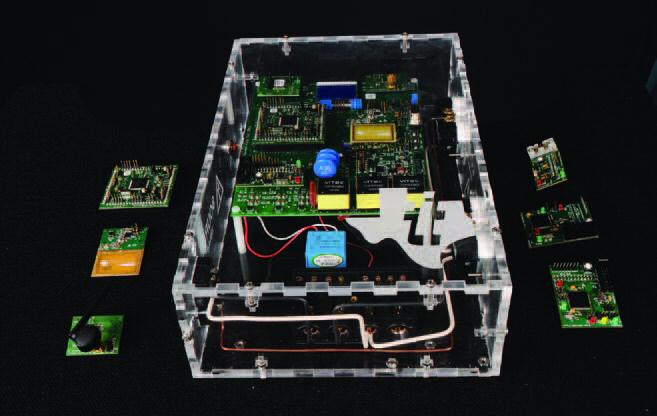Leveraging expertise and leadership in the smart-grid market, Texas Instruments is now sampling a fully integrated and optimized smart-meter SoC for smart e-mater (electric-meter) designs. The integration of metrology, application, and communication functions in one chip allows developers to simplify designs, increase flexibility, and reduce system costs for smart e-metering applications. By eliminating the need for additional discrete components and redundant interfaces, the integration increases the reliability of smart e-meter designs. The new smart-meter SoC provides developers with a high level of integration, complements TI's portfolio for smart-grid e-meter designs, and now allows customers to scale their smart e-metering designs from several discrete components to the new IC. The new smart-meter SoC combines three independent engines. The metrology engine delivers 0.5% meter-class accuracy and includes support for single-phase or three-phase meters. The independent industry-standard ARM Cortex-M3 core allows ease of development for meter-management firmware (DLMS/COSEM), advanced metrology, application profiles, network stack, and security with up to 1-MB flash memory. An independent, flexible communication engine includes support of multiple standards for PLC (power line communication) and RF communication to allow developers to design products capable of communicating with WAN (wide-area network) and HAN (home-area network) domains and enabled devices. Features and benefits of TI's smart-meter SoC

Texas Instruments connects the smart grid with a new modular and scalable smart-meter development platform that supports multiple communication protocols. The new smart-meter board-development platform lets developers customize their design tools, hardware, and software to their exact needs. Enabling developers to add multiple connectivity, processor, and metrology options to their smart-meter designs, Texas Instruments has announced a modular and scalable SMB (smart-meter board) development platform that supports single-phase to three-phase smart electric meters with the smart grid's most prolific communications protocols. The SMB is an innovative development platform that incorporates key smart-grid devices from TI's broad portfolio of embedded, analog, and connectivity technologies to demonstrate the capabilities of a smart meter. The SMB is a unique modular and scalable environment that lets developers include multiple wired and wireless communication protocols including PLC (power line communication), NFC (near field communication), Wi-Fi, sub-GHz and 2.4 GHz ZigBee SEP (Smart Energy Profile) on e-metering or pre-payment metering applications to showcase AMR (automatic meter reading) and AMI (automatic metering infrastructure) systems. Developers using the SMB development platform benefit from TI's robust smart-grid software libraries when implementing key communication standards and typical utility-meter functions. The software libraries, combined with TI's SMB, let developers choose which development tool matches their project needs. The new SMB system integrates TI's expertise in the smart-grid and connectivity markets and highlights TI's broad portfolio of smart-grid technologies. TI's recently announced smart-meter SoC is compatible with the SMB system and can be plugged into the board for development and expand the SoC's functions. Features and benefits of TI's Smart Meter Board: